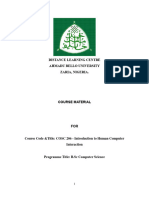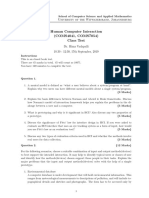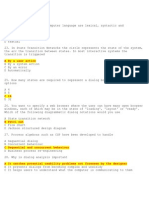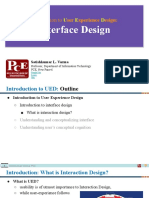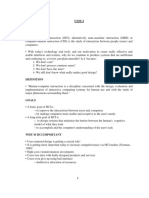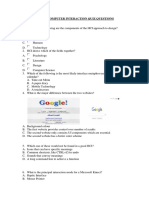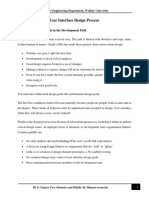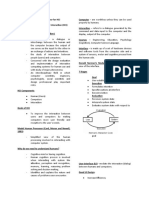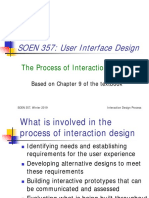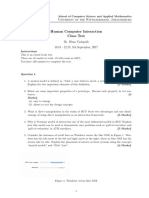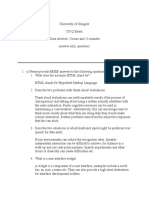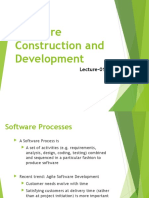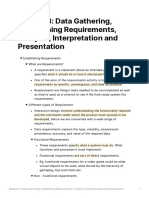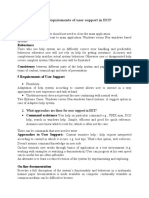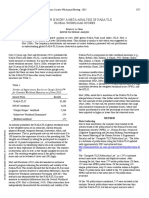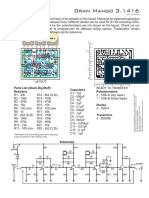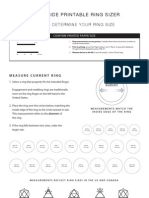Answer all the questions.
Part A - Answer all the objective questions (20 marks)
1. Input in the human occurs mainly through the senses. Which of the following senses are the most important to HCI?
a. Smell, hearing, taste c. Hearing, touch, taste
b. Sight, hearing, touch d. Taste, sight, touch
2. The use of computer system comprises of these aspect:
i. How they differentiate the capability of human.
ii. How they store and process information
iii. How they physically manipulate objects.
iv. How they solve problems.
a. i, ii and iii c. i, ii and iv
b. ii, iii and iv d. i, ii, iii and iv
3. Which of the following is an interaction process between user and computer?
a. Public interaction c. Continuous interaction
b. Spontaneous interaction d. Direct interaction
4. Which of the following is not a correct pair?
a. Subsonic memory smell
b. Echoic memory sound
c. Haptic memory touch
d. Iconic memory image
5. There are number of different types of process and applied. Which of the following is not true?
a. Problem Solving c. Reasoning
b. Physical Reception d. Skill Acquisition
6. Which of the elements doesn’t fit into the categories?
a. Output bitmap technologies, large display
b. Pointer touchscreen, stylus pen, touchpad
c. Input keyboard, phone pad, speech recognition
d. Pointer trackball, handwriting recognition, Mouse
7. Which of the following is the correct flow of Norman’s model?
i. evaluates system state with respect to goal
ii. specifies actions at interface
iii. user establishes the goal
iv. perceives system state
v. interprets system state
vi. formulates intention
vii. executes action
a. iii, ii, vi, vii, v, iv, i c. iii, vi, ii, vii, iv, v, i
b. iii, vi, i, vii, iv, ii, v d. iii, i, ii, iv, vii, iv, v
1
�8. Which of the following is not true about command line interaction style?
a. suitable for repetitive tasks
b. better for novices than expert users
c. offers direct access to system functionality
d. command names/abbreviations should be meaningful
9. Menus in interaction style can be selected by
i. Numbers iii. Arrow keys
ii. Letters iv. Mouse
a. i and ii c. i, ii and iii
b. ii and iii d. i, ii, iii and iv
10. Question / answer interfaces always been used for
a. suitable for novice users with full functionality
b. used language syntax to retrieve information
c. user led through interaction via series of questions
d. often used in mathematical questions
11. Arrange the following interaction design processes.
i. Building interactive versions of the designs
ii. Identifying needs and establishing requirements for the user experience
iii. Evaluating what is being built throughout the process and the user experience it offers
iv. Developing alternative designs that meet those requirements
a. ii, iv, i, iii c. ii, I, iv, iii
b. iv, i, ii, iii d. i, iv, ii, iii
12. One of the following types of prototypes is not true. Which one is it?
a. Throw-away c. Iterative
b. Incremental d. Evolutionary
For question 13 – 14, answer the questions by referring the given diagram. / Untuk soalan 21 – 25, jawab soalan-soalan dengan
merujuk rajah di bawah.
13. Name the displayed lifecycle model above.
a. The Waterfall Model c. The RAD Lifecycle Model
b. The Spiral Lifecycle Model d. The DSDM Lifecycle Model
2
�14. Who introduced the model?
a. James Martin c. Jenny Preece
b. Barry Boehm d. Alan Dix
15. Why does an interactive system design is much better than a traditional lifecycle model?
a. An interactive system design work in a pipeline order
b. An interactive system design must be evaluated when the system is completed
c. An interactive system design does not promote the use of notations and techniques
d. An interactive system design use the iterative approach
16. What do they measure in usability engineering?
a. Measurement of system functionality
b. Measurement of user experiences
c. Measurement of system requirement
d. Measurement of user acceptance
17. Which of the following is not one of the usability specification?
a. Measuring concept c. usability attribute
b. Planned level d. correct case
18. A design model that is in the Process-Oriented Design Rationale is
a. Issue-Based Information System c. Web-Based Information System
b. Information-Based Computer System d. Idea-Based Information System
19. What is the disadvantage of applying design space analysis in system design?
a. The knowledge cannot be represent to other products
b. Increase overhead; analysis warrants
c. Required specific question to judge the options
d. Rely on the stakeholders to make decision
20. Which of the following is not a purpose of psychological design rationale?
a. Support task-artifact cycle of design activity
b. make explicit the consequences of a design for the user
c. It can abstract away from the particulars of a design meeting
d. Designer should involve in setting tasks and building the system.
Part B - Tick (√) for true statement and (x) for false. (20 marks)
21) Computer in HCI is referring to a general desktop computer.
22) The Model Human Processor comprises of perspective, motor and cognitive subsystem.
23) The Model Human Processor is based on human information processing model of cognition.
24) Touch provides important feedback about environment.
25) The sensory memories act as buffers for stimuli received through the senses.
26) The long term memory also known as working memory.
27) The interaction model will reflect the user intention in the output display .
The four processes between the interaction framework are articulation, performance, presentation and
28)
evaluation.
By using Abowd & Beale interaction framework, all user intentions can be translated into actions at the
29)
interface.
3
�30) The general interaction framework only restricted to electronic computer systems.
31) Context is a study of the physical characteristics of interaction.
32) Ergonomics primary focus is on user performance and how the interface enhances or detracts.
33) A pull-down menu required user to click mouse in order to reveals menu.
34) Pointers in WIMP interface is only limited to arrows and bars images.
35) SQL is an example of query language.
36) Software engineering is the discipline for understanding the software design process, or life cycle
37) Storyboard is one of the techniques in prototyping.
38) Design rationale can organizes potentially large design space
39) Design rationale is information that explains why a computer system is the way it is.
40) Iterative design demands that specific usability measures be made explicit as requirements
Part C – Answer all the subjective questions. (10 marks)
1. According to the situation given, create a design space analysis that have at least 3 (three) option of solutions /
Berdasarkan situasi berikut, hasilkan analisis perancangan ruangan yang mempunyai sekurang-kurangnya 3 (tiga)
pilihan penyelesaian.
a. What are the causes for students to come late to the class / Apakah punca kelewatan pelajar hadir ke kelas.
b. How to make menu order from fast food restaurant / Bagaimana untuk membuat menu pesanan daripada
rangkaian restoran makanan segera

